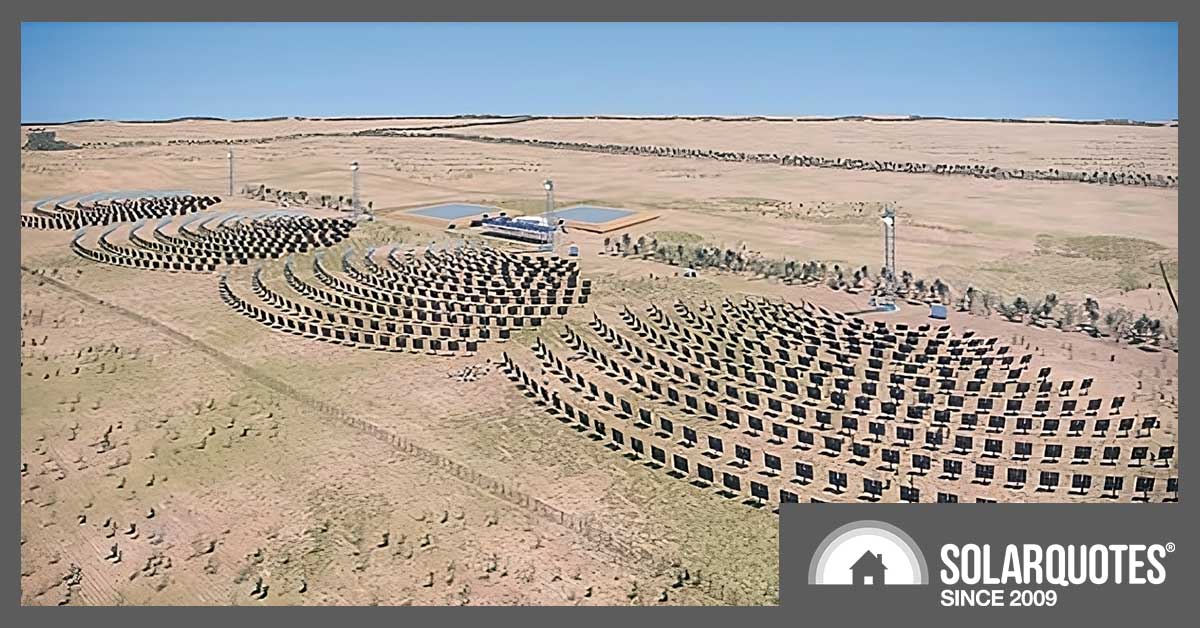RayGen is building a concentrator-style PV power plant in Victoria with thermal storage, and incredible claimed efficiency, and they’ve picked Alfa Laval to provide the heat exchangers.
RayGen’s Self-Aligning Mirrors and ‘PV Ultra’ Solar Cell Array
The RayGen self-aligning mirrors concentrate sunlight onto a tower-mounted receiver containing the ‘PV Ultra’ solar cell array. All this concentrated sunlight uses the photovoltaic effect to produce electricity from the PV cells at over 30% efficiency along with a lot of heat. That heat is not wasted but used to drive a Rankine cycle engine. The company claims the system’s total efficiency is 90%, with about 30% from concentrated PV and 60% from heat recovery.
Alfa Laval Heat Exchangers: Converting Waste Solar Heat into Useful Stored Energy
The Alfa Laval heat exchangers will collect heat from the PV Ultra solar cells, and use it to heat water.
The hot water is stored in one reservoir, while electricity from PV Ultra or the grid runs a chiller to produce near-freezing water in a second reservoir. This hot and cold water does not need to be used immediately, it can be stored and used to dispatch electricity overnight.
Organic Rankine Cycle Turbines Explained
The hot and cold water drives an Organic Rankine Cycle (ORC) turbine. In an ORC turbine, organic fluids are used. These fluids have lower boiling points than water, so they can be turned into gas (vaporised) at much lower temperatures. This means that ORC turbines can be used where the heat source isn’t hot enough to produce steam.
The hot water provides the energy needed to start the cycle, evaporating the fluid. This creates a high-pressure gas that drives a turbine. Once it has gone through the turbine, the gas – now at a lower pressure – enters a condenser where the cold water is used to cool it down and condense it back into a liquid.
The company said the 4MW Carwarp plant is designed to deliver power to around 1,000 homes in its media release.
Energy Storage at Half the Price of Lithium Batteries: A Bold Claim from RayGen
RayGen also claims it can store energy at half the price of lithium batteries. That’s a big call. Finn’s asked Ronald to objectively examine the economics of Raygen’s technology. Stay tuned for that post.
It’s been a slow road for RayGen: it first deployed a test facility in Newbridge in Victoria in 2015.
The company’s web page shows Newbridge has had three 250kW PV Ultra systems since 2018. The Carwarp facility is shown as half completed.


 RSS - Posts
RSS - Posts



How is the hot and cold water produced in the system stored and used to dispatch electricity overnight?
Thermal storage. then the stored heat and cool drives the ORC engine.
What they’re hiding is the end-to-end efficiency. Publicly available information on the ORC itself talks about 7-12% efficiency but with RayGen’s system there would be some sort of multiplier on top of that as the Solar is being used to run phase change to create some of the hot/cold and phase change has >100% thermal efficiency. But they’re not sharing either their current or aimed for end-to-end efficiency, nor the component EER, CoP, or PEF.